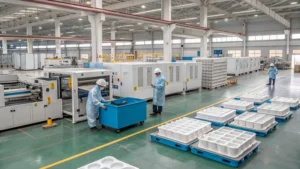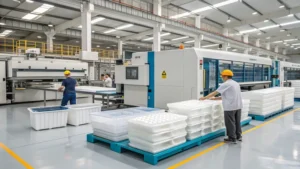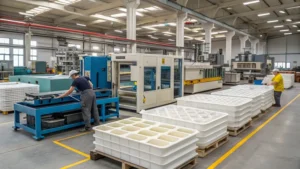
3D printing, also known as additive manufacturing, has transformed the prototyping landscape, especially for extruded parts—components formed by pushing material through a die to create a consistent cross-section. Traditional prototyping methods for these parts often involve costly tooling and lengthy timelines, but 3D printing offers a faster, more flexible, and cost-effective solution. This blog post explores how 3D printing aids in prototyping extruded parts, covering foundational concepts, detailed workflows, practical tools, and real-world applications.
3D printing accelerates prototyping of extruded parts by enabling rapid, cost-effective creation of physical models, allowing for quick design iterations and functional testing before final production.
Whether you’re in automotive, aerospace, or construction, understanding how 3D printing enhances prototyping can streamline your development process and reduce costs. Dive into the sections below to see how this technology can elevate your next project.
3D printing reduces prototyping time for extruded parts.True
By eliminating the need for custom tooling and enabling rapid iterations, 3D printing significantly speeds up the prototyping process.
3D printing is only useful for plastic extruded parts.False
While commonly used for plastics, 3D printing can also prototype metal extruded parts using technologies like SLS or binder jetting.
- 1. What is 3D Printing and How Does it Relate to Extruded Parts?
- 2. What are the Steps in Using 3D Printing for Prototyping Extruded Parts?
- 3. What are the Key Factors in Choosing 3D Printing for Prototyping Extruded Parts?
- 4. What are the Applications of 3D Printing in Prototyping Extruded Parts?
- 5. What are the Differences Between 3D Printing and Traditional Prototyping Methods for Extruded Parts?
- 6. Practical Tools for 3D Printing Extruded Part Prototypes
- 7. Conclusion
What is 3D Printing and How Does it Relate to Extruded Parts?
3D printing is a game-changer in prototyping, offering unparalleled speed and flexibility, especially for extruded parts that require precise cross-sectional designs.

3D printing, or additive manufacturing, builds parts layer by layer from digital models, ideal for prototyping extruded parts like profiles or tubes by quickly creating accurate, testable models.
| 3D Printing Technology | Best For | Notes |
|---|---|---|
| Fused Deposition Modeling (FDM) | Cost-effective plastic prototypes | Affordable, widely used |
| Stereolithography (SLA) | High-detail, smooth finishes | Ideal for complex designs |
| Selective Laser Sintering (SLS) | Durable, functional prototypes | Supports metals and nylons |
Understanding Extruded Parts
Extruded parts are created by forcing materials—such as plastics or metals—through a die, resulting in shapes like pipes, profiles, or frames with a uniform cross-section. Traditionally, prototyping these parts requires custom dies or machining, which can be both expensive and slow. 3D printing bypasses these hurdles by directly producing prototypes from digital designs, eliminating the need for specialized tooling.
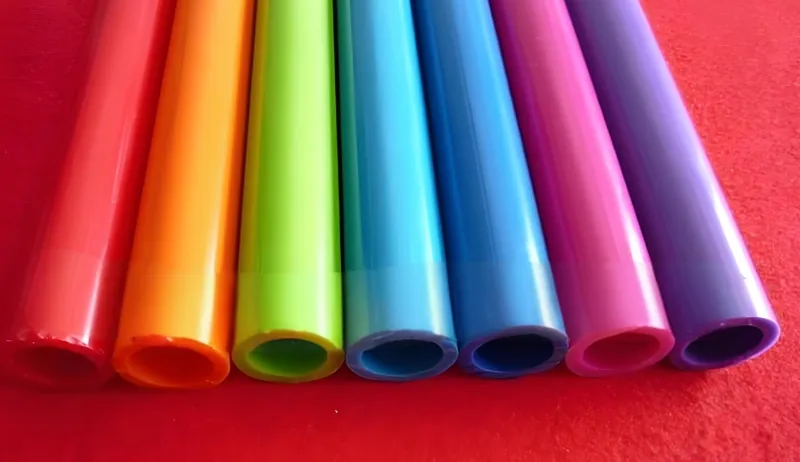
The Role of 3D Printing in Prototyping
By constructing parts layer by layer, 3D printing excels at prototyping extruded parts that need consistent cross-sections. Technologies like Fused Deposition Modeling (FDM)1 are perfect for affordable plastic prototypes, while Selective Laser Sintering (SLS)2 supports more robust materials like nylon or metal for functional testing.
3D printing is essential for prototyping complex extruded parts.True
It allows for the creation of intricate designs that would be difficult or impossible with traditional methods.
3D printing cannot replicate the material properties of final extruded parts.False
Advanced 3D printing technologies can use materials that closely mimic the properties of extruded parts, especially for functional testing.
What are the Steps in Using 3D Printing for Prototyping Extruded Parts?
The process of prototyping extruded parts with 3D printing is structured and efficient, ensuring prototypes meet design and functional requirements.
The 3D printing prototyping process includes designing in CAD, preparing the model, selecting technology and materials, printing, post-processing, and testing, ensuring accuracy and functionality.

Step 1: Design the Part in CAD
Begin with a digital model created in CAD software like SolidWorks3 or AutoCAD4. Focus on maintaining a constant cross-section to reflect the extrusion process accurately.
Step 2: Prepare the 3D Model
Optimize the model for printing by ensuring it’s manifold (watertight) and properly oriented. Tools like Meshmixer5 can refine the design for compatibility with your chosen printer.
Step 3: Select the Right Technology and Material
Match the technology and material to your prototype’s needs:
-
FDM: Affordable plastic prototypes (e.g., ABS, PLA).
-
SLA: High-detail finishes for intricate designs.
-
SLS: Durable prototypes in nylon or metal.
Select materials that approximate the final part’s properties for accurate testing.
Step 4: Print the Prototype
The printer constructs the part layer by layer. Adjust settings like layer thickness (e.g., 0.1mm for precision) and infill density (e.g., 20% for lightweight parts) to balance quality and efficiency.
Step 5: Post-Process if Necessary
Post-processing varies by technology: remove supports and sand FDM prints, cure SLA prints under UV light, or clean excess powder from SLS parts.
Step 6: Test the Prototype
Assess the prototype for fit, form, and function, ensuring the cross-section aligns with design specs. Iterate as needed to refine the design.
3D printing always produces prototypes with perfect accuracy.False
Accuracy depends on the technology and settings used; some printers may require calibration for precision.
3D printing reduces the need for multiple prototypes.True
Its flexibility allows for quick design changes, often reducing the number of iterations needed.
What are the Key Factors in Choosing 3D Printing for Prototyping Extruded Parts?
Choosing the right 3D printing approach hinges on several factors that influence the prototype’s quality and suitability.
Key factors in choosing 3D printing for prototyping extruded parts include part complexity, material properties, cost, and production speed, which determine the best technology and process.
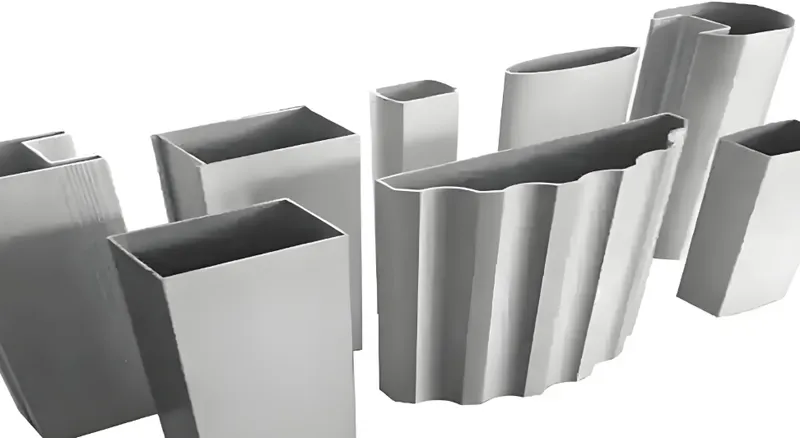
Part Complexity
Complex designs with internal features favor SLA or SLS for their precision, while simpler profiles suit FDM.
Material Requirements
Match materials to the final part: ABS or PLA for plastics, metal powders for durable metal prototypes via SLS.
Cost Considerations
FDM is budget-friendly for early prototypes, while SLA and SLS, though pricier, offer superior detail and strength.

Production Speed
3D printing outpaces traditional methods, with FDM being fastest for large parts and SLA/SLS requiring additional post-processing time.
Design Constraints
Maintain a constant cross-section in the design to mirror extrusion limitations, ensuring the prototype reflects the final product accurately.
Material selection is crucial for functional testing of prototypes.True
Using materials that mimic the final part’s properties ensures accurate testing of strength, durability, and other characteristics.
All 3D printing technologies are equally suitable for prototyping extruded parts.False
Different technologies offer varying levels of detail, strength, and material options, making some more suitable than others depending on the project.
What are the Applications of 3D Printing in Prototyping Extruded Parts?
3D printing shines across industries, enabling rapid prototyping of extruded parts with significant benefits.
3D printing is used in automotive, aerospace, and construction for prototyping extruded parts like profiles, frames, and tubing, enabling faster design validation and functional testing.

Automotive Industry
Prototypes like plastic trims, seals, and structural components are quickly tested for fit and function using 3D printing, speeding up vehicle development.
Aerospace Sector
Metal brackets and frames are prototyped with SLS, meeting stringent weight and strength requirements before production.
Construction Applications
Architectural profiles and insulation components are validated with 3D-printed prototypes, ensuring material performance and design accuracy.
3D printing reduces material waste in prototyping.True
Additive manufacturing uses only the material needed for the part, minimizing waste compared to subtractive methods.
3D printing is only beneficial for small-scale prototyping.False
While ideal for small batches, 3D printing can also be used for larger prototypes or even small production runs in some cases.
What are the Differences Between 3D Printing and Traditional Prototyping Methods for Extruded Parts?
Comparing 3D printing to traditional methods highlights its unique advantages and trade-offs.

3D printing offers faster, more flexible prototyping with lower upfront costs compared to traditional methods like machining or die creation, but may differ in material properties.
| Aspect | 3D Printing | Traditional Methods |
|---|---|---|
| Speed | Rapid iterations, no tooling | Slower due to die creation |
| Cost | Lower for small batches | Higher due to tooling costs |
| Material Accuracy | Mimics final properties | Uses actual production materials |
| Design Freedom | Handles complex geometries | Limited by tooling constraints |
Speed and Flexibility
3D printing enables quick design changes without new tools, unlike traditional methods reliant on custom dies.
Cost Efficiency
It’s more economical for one-offs or small runs, while traditional methods scale better for mass production.

Material Properties
Traditional methods use production materials for exact testing, but 3D printing’s advanced materials increasingly bridge this gap.
Design Limitations
3D printing6 excels at complex designs unfeasible with extrusion or machining, offering greater creative freedom.
Traditional prototyping methods are obsolete due to 3D printing.False
Traditional methods still have advantages in material accuracy and large-scale production, complementing 3D printing.
3D printing is more environmentally friendly than traditional prototyping.True
It reduces material waste and energy consumption by building parts layer by layer.
Practical Tools for 3D Printing Extruded Part Prototypes
To maximize 3D printing’s potential, use these practical tools and guides.

Design Checklist
-
Cross-Section Consistency: Ensure a uniform cross-section to mimic extrusion.
-
Print Orientation: Optimize for strength and accuracy.
-
Support Structures: Minimize where possible to reduce post-processing.
-
Material Compatibility: Match material to printer and final part needs.
Decision-Making Guide
| Factor | FDM | SLA | SLS |
|---|---|---|---|
| Complexity | Simple | High | Moderate-High |
| Material | Plastics | Resins | Plastics/Metals |
| Cost | Low | Medium | High |
| Speed | Fast | Moderate | Slower |
Choose based on your project’s priorities—cost, detail, or durability.
Conclusion
3D printing has redefined prototyping7 for extruded parts, delivering speed, flexibility, and cost savings over traditional methods. From automotive trims to aerospace frames, it empowers rapid iteration and complex designs, reducing waste and accelerating development. While it may not fully replicate final material properties, ongoing advancements make it an essential tool for modern prototyping. Embrace 3D printing to enhance your workflow and bring innovative extruded parts to life faster.
-
Learn more about Fused Deposition Modeling (FDM) and its applications in prototyping. ↩
-
Explore Selective Laser Sintering (SLS) for durable, functional prototypes. ↩
-
SolidWorks is a leading CAD software for designing 3D models. ↩
-
Meshmixer is a free tool for optimizing 3D models for printing. ↩
-
Explore the benefits of 3D printing in prototyping, including speed, cost efficiency, and design flexibility. ↩
-
Learn how 3D printing revolutionizes prototyping, making it faster and more efficient for various industries. ↩



